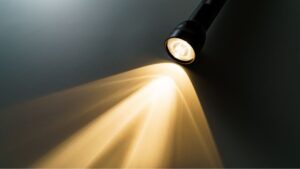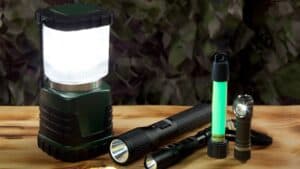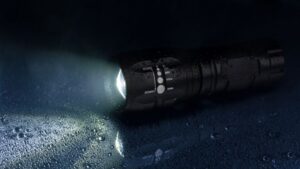Ever wondered how that trusty LED flashlight in your emergency kit or toolbox came to be? Today, we’re going to shine a light on the fascinating process of LED flashlight production. Whether you’re a curious consumer or someone interested in manufacturing, this comprehensive guide will walk you through everything you need to know about how these essential tools are made.
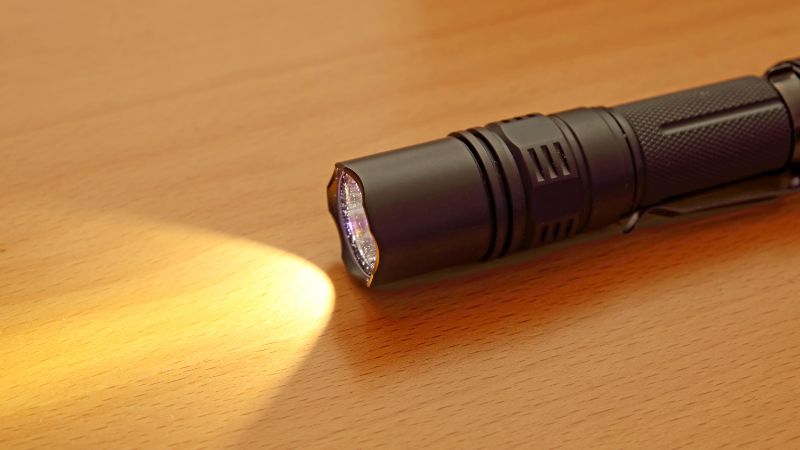
Understanding LED Flashlight Components
Let’s start by breaking down what makes up your typical LED flashlight. Every LED flashlight is a carefully assembled combination of several crucial components:
| Transparent Cover/Lens | The “window” through which the light shines. This can be made of glass or plastic, with varying degrees of impact resistance and clarity. |
| LED Chip | The heart of the flashlight. Different types of LEDs (like Cree or Nichia) offer varying brightness, color temperature, and efficiency. Higher-quality LEDs generally produce brighter, more efficient light. |
| Reflector | Directs the light from the LED into a focused beam. Common materials include aluminum or plastic, shaped to control the beam pattern (wide, narrow, etc.). |
| Internal Wiring | Connects the battery to the LED and switch. Typically made of copper or other conductive metals, the wiring must be properly insulated to ensure safety and functionality. |
| Control Switch | The on/off mechanism. Different switches offer various functionalities like momentary on, multiple brightness levels, or strobe effects. |
| Battery Compartment | Houses the power source. Designed to securely hold the batteries and provide proper electrical contact. |
| Outer Casing | The protective shell of the flashlight. Materials range from durable plastics like ABS and polycarbonate to robust metals such as aluminum alloys (like 6061), copper, or even titanium for high-end models. The casing protects the internal components from impact, water, and dust. |
Materials Used in Manufacturing
Manufacturers have quite a few options to work with. The choice of materials significantly impacts the flashlight’s durability, weight, and cost. Let’s examine the main materials used:
1. Metal Options:
- Aluminum
Aluminum serves as the industry standard, offering an optimal balance of features. It excels in heat dissipation, provides good durability, and remains cost-effective for mass production while being easy to machine.

- Aluminum Alloy
Aluminum Alloy represents the next tier up, providing enhanced strength and superior corrosion resistance. Though more expensive than standard aluminum, it delivers a premium feel and improved durability for professional-grade flashlights.
- Titanium
Titanium stands as the premium choice in flashlight materials. Despite its high cost, it offers unmatched durability while maintaining surprisingly light weight, making it ideal for high-end professional and specialized applications.
2. Plastic Options:
- Polystyrene
Polystyrene represents the entry-level plastic option. Its lightweight properties and cost-effectiveness make it perfect for basic models and budget-friendly flashlights.
- Glass-reinforced Epoxies
Glass-reinforced Epoxies provide a significant upgrade in plastic materials. They offer enhanced durability and superior heat resistance compared to basic plastics, justifying their higher cost.
- Acrylonitrile Butadiene Styrene (ABS)
Acrylonitrile Butadiene Styrene (ABS) serves as a middle-ground solution. It combines good impact and chemical resistance with moderate pricing, making it suitable for everyday-use flashlights.
The Manufacturing Process of LED Flashlights
Metal LED Flashlights Production Process
The manufacturing of metal LED flashlights follows a precise five-step sequence, transforming raw metal into professional lighting equipment:
Step 1: Initial Body Formation
CNC lathes equipped with multiple cutting tools shape raw metal bars into the basic flashlight form. The process operates under controlled speeds and temperatures, with real-time monitoring systems ensuring consistent quality. Required precision is maintained through computerized controls and advanced sensors.
Step 2: Interior Development
Specialized drilling equipment creates the internal cavity using a multi-stage process. A continuous cooling system circulates fluid to prevent metal distortion while maintaining exact specifications. This phase requires precise temperature control and dimensional accuracy to ensure proper component fitting.
Step 3: Technical Feature Integration
This phase adds functional elements through CNC operations:
- Thread cutting for water-tight seals
- Knurling patterns for grip
- Mounting points for accessories
- Ventilation channels for heat management Each feature follows strict engineering specifications.
Step 4: Surface Finishing
The surface treatment process includes:
- Cleaning and surface preparation
- Protective coating application (anodizing or specialized coatings)
- Quality inspection for coating consistency
- Final surface verification
Step 5: Electronic Component Integration
Final assembly involves:
- LED module mounting with thermal management
- Circuit board installation
- Wire routing and connection
- Switch mechanism installation
- Waterproof seal application
Each step undergoes specific quality control measures, ensuring the final product meets performance requirements and durability standards. The entire process takes place in controlled environments to maintain consistent production quality.
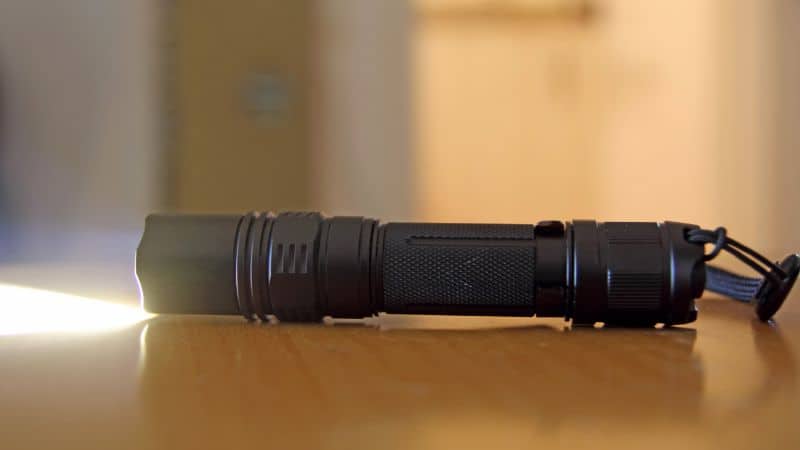
Plastic LED Flashlight Production Process
The manufacturing of plastic LED flashlights follows a streamlined process that combines injection molding with precise assembly techniques:
Step 1: Initial Material Preparation
The process begins with selecting appropriate plastic materials – typically ABS, polystyrene, or reinforced polymers – combined with necessary additives for color, UV resistance, and impact strength.
Step 2: Injection Molding Phase
- Material Heating
Plastic pellets are heated to 200-250°C under computer-controlled conditions to ensure uniform melting.
- Injection Process
Molten plastic is injected into precision molds under pressures up to 2,500 tons, with sensors monitoring filling consistency.
- Cooling System
Water-cooled molds maintain optimal temperatures through computerized cooling cycle management, preventing warping and ensuring dimensional stability.
Step 3: Component Assembly
The assembly process involves three main stages:
- LED Module Installation
LED Module Installation comprises precise LED chip positioning with integrated thermal management systems and electrical connections to ensure optimal light output and heat dissipation.
- Circuit Integration
Circuit Integration involves mounting the circuit board, routing wires, and installing the switch mechanism and battery contacts for reliable power delivery and operation.
- Final Assembly and Sealing
Final Assembly and Sealing include housing assembly with waterproof gaskets, vacuum sealing, component securing, and comprehensive testing to verify performance and durability.
Each phase undergoes specific quality control measures, including light output testing, water resistance verification, and durability checks, ensuring the final product meets performance requirements while maintaining cost-effectiveness.
Power Source Options for LED Flashlights
LED flashlights rely on various battery types, each offering distinct advantages for different applications. Here’s a comprehensive overview of the main power options:

Alkaline Battery Options
- 9V Batteries
These compact power sources are ideal for slim-profile flashlights. They deliver consistent voltage output and are readily available, making them practical for everyday carry flashlights.
- AA/AAA Batteries
These represent the most versatile power option in the industry. AA batteries offer higher capacity for extended use, while AAA batteries enable more compact designs. Their universal availability and reasonable cost make them popular choices for consumer flashlights.
- C Cell Batteries
Designed for medium-duty applications, C cells provide an excellent balance between power output and runtime. They’re commonly used in professional-grade flashlights where extended operation is necessary but extreme power isn’t required.
- D Cell Batteries
These heavy-duty power sources are the go-to choice for high-power applications. Their large capacity makes them ideal for emergency services, search and rescue, and industrial applications where maximum brightness and extended runtime are crucial.
Lithium Battery Options
- Rechargeable Lithium-ion
Advanced batteries offering superior performance through high energy density and long cycle life. Their temperature resilience and rechargeability make them cost-effective for frequent use while providing environmental benefits through waste reduction.
- Non-rechargeable Lithium
Specialized batteries designed for reliability and longevity, excelling in long-term storage and extreme conditions. Their consistent voltage output and extended shelf life make them ideal for emergency equipment and critical applications requiring dependable performance.
Each battery type is chosen based on specific application requirements, considering factors like runtime needs, power output demands, cost considerations, and usage frequency.
Customization Options
Here’s something cool – LED flashlights can be personalized! Whether you’re looking to brand company giveaways or create unique designs, there are several methods available:
- Screen Printing: Perfect for simple designs
- Stamp Printing: Great for detailed logos
- Full-Color Printing: Ideal for complex designs
- Laser Engraving: The premium option for metal flashlights
Final Thoughts
LED flashlight production is a fascinating blend of precision engineering and practical design. From the initial shaping of materials to the final assembly and customization options, each step contributes to creating a reliable tool that lights up our lives when we need it most.
Whether you’re choosing a flashlight for your home emergency kit, outdoor adventures, or as a promotional item for your business, understanding how these devices are made can help you make better-informed decisions about which type best suits your needs.

Looking for a Reliable Flashlight Supplier for Your Project?
If you’re in need of reliable and high-quality LED flashlights for your project, M&F Optoelectronics is the perfect choice! With a great selection of durable and bright flashlights, we cater to everything from personal use to professional applications. Our commitment to quality ensures that every flashlight we produce offers optimal performance and longevity.
Partner with M&F Optoelectronics to ensure you have the best lighting solutions for your projects. Visit our website to explore the full range of products and discover how we can help brighten your world!


